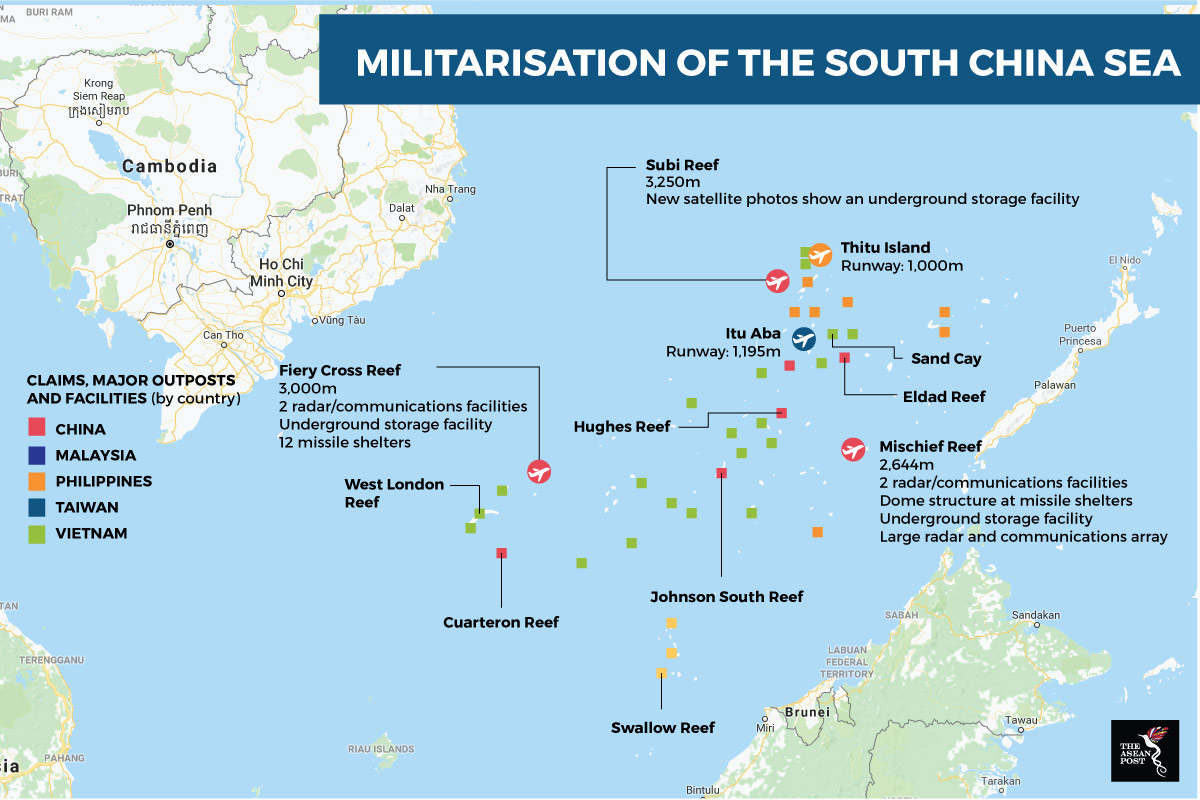The South China Sea dispute has for the longest time been a thorn in the flesh of relations between claimant Southeast Asian states and China – and for good reason. It is one of the key arteries of global trade, carrying an estimated one third of global shipping amounting to trillions of dollars. It is also rich in hydrocarbon resources. Estimates by the United States Energy Information Administration indicate that 11 billion barrels of oil and 190 trillion cubic feet of gas lies within the seabed of the South China Sea.
The vast riches associated with the area has resulted in several incidents between naval and coastguard personnel from disputing states. This puts China and other Association of Southeast Asian Nations (ASEAN) claimants in a tricky situation of having to balance their interests in the contested waters and their relations with each other.
China’s role in Southeast Asia
So far, those embroiled in the conflict have taken a tactful and diplomatic approach towards conflict resolution with an emphasis on peaceful settlement of the dispute in the long run.
Recently, Beijing and Hanoi vowed to maintain restraint when dealing with matters pertaining to the resource-rich waterway.
"Both sides should abide by the basic governing principles on resolving maritime issues. Both sides should not apply unilateral measures that would complicate the situation," China's Foreign Minister Wang Yi was quoted as saying by Agence France Presse (AFP).
Similarly, with the Philippines, China has raised the possibility of joint exploration and resource sharing as a solution to the conundrum. Such a move could serve as a stepping stone to future collaboration which may ultimately see all claimant states pursue a common goal in the maritime area.

One of the major reasons for this is the immense economic stake at hand. Claimant states like Malaysia, the Philippines, Vietnam and Brunei rely heavily on China for economic support. Besides that, the scourge of economic isolationism, as a result of the policies of the Trump administration in the United States (US), provides more reasons as to why these nations should hedge their economic bets on the second largest economy in the world. Of the four ASEAN claimant states, three are still developing economies (Malaysia, Vietnam and the Philippines) which rely heavily on foreign investment to develop.
Malaysia and the Philippines are key recipients of Chinese investment to bolster their respective domestic infrastructure agendas. Moreover, Vietnam which has seen its coastguards embroiled in a serious standoff against their Chinese counterparts in 2014, is now cosying up to China, thanks to the latter’s investments in Vietnam’s economy in the tourism and manufacturing sectors. Brunei, which is seeking to diversify its fossil fuel dependent economy has also turned to China for investment and trade. In 2017, China was Brunei’s largest foreign investor, with investments totalling US$4.1 billion.
What does Beijing stand to lose?
Hence, these are good reasons why ASEAN claimant states should play nice with China. This is why the pursuant of claims vis-à-vis the dispute is done largely via multilateral diplomatic channels like ASEAN.
However, China has been often times accused of exploiting the fractiousness of ASEAN’s “consensus based” workings to its advantage. Cambodia, which is perceived as Beijing’s viceroy in the 10-member association plays the role of spoiler in ensuring consensus on the dispute is not met within the ASEAN echo chambers.
Nevertheless, China cannot stand to gain from continuous exploitation of ASEAN’s apparent frailties because it needs the Southeast Asian states as much as they need Beijing. Chinese aggression in the South China Sea has been previously met with rousing nationalistic opposition in places like Vietnam and Malaysia. For China to ensure its ambitions in the region – like the trillion-dollar Belt and Road Initiative (BRI) – are met, it must portray an image of a responsible stakeholder in the region.
Such exploitative actions will only tatter the image of China against a declining US presence in the region. Besides that, the negative impression created will also affect Chinese products and investments that have been flooding Southeast Asian economies in the e-commerce, manufacturing and electronics sectors.
In short, Beijing will only stand to gain from a peaceful and prosperous resolution of the dispute. As many forecast China’s rise to becoming de-facto hegemon in the region, it would be extremely counterintuitive for it to squander such an opportunity by raising tensions in the South China Sea.
